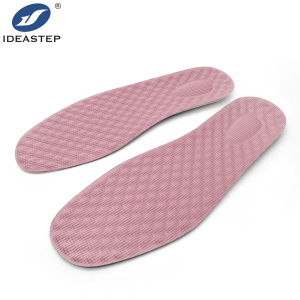
The absence of arch support in certain insoles can be a perplexing issue for individuals seeking foot comfort and support. While many insoles are designed to provide arch support, some are intentionally crafted without this feature. This article aims to explore the reasons behind the absence of arch support in certain insoles. Shedding light on the factors influencing their design and intended use.
1. Footwear Compatibility
Insoles without arch support are often designed for use in footwear that already provides adequate arch support. Such as athletic shoes, casual footwear, or work boots. In such cases, adding additional arch support through the insoles may lead to overcorrection and discomfort. Making insoles without arch support a suitable option for maintaining the natural alignment of the foot within supportive footwear.
2. Personalized Orthotic Considerations
Individuals with custom orthotics or prescribed arch support may opt for insoles without built-in arch support to allow for the use of their personalized orthotic devices. These individuals may require additional cushioning, shock absorption, or a specific footbed shape. Making insoles without arch support a compatible choice for accommodating their unique orthotic needs.
3. Foot Anatomy and Preferences
Some individuals have foot structures that do not require or benefit from additional arch support. Insoles without arch support cater to individuals with neutral or low arches, as well as those who prefer a flatter, more natural footbed feel. By offering a minimalist design, these insoles allow for a more adaptable and personalized fit based on individual foot anatomy and comfort preferences.
4. Specialty Footwear and Activities
In certain instances, insoles without arch support are tailored for specific activities or types of footwear where excessive arch support may be counterproductive. For example, insoles designed for cycling shoes, dress shoes, or minimalist footwear are often crafted without arch support to complement the intended use and fit seamlessly within the footwear without altering its design or function.
5. Pain Relief and Rehabilitation
In some cases, individuals experience foot conditions. As plantar fasciitis or heel spurs may find relief from using insoles without arch support. These insoles allow for a more natural foot position, reducing strain on the plantar fascia and promoting a more comfortable gait during the rehabilitation process.
6. Flexibility and Versatility
Insoles without arch support offer greater flexibility and versatility for individuals who prefer to customize their footwear support. By allowing the option to add separate arch support inserts or orthotic devices as needed. These insoles provide a modular approach to foot comfort, catering to a diverse range of foot support requirements.
The absence of arch support in certain insoles serves a specific purpose, catering to individual foot anatomy, footwear compatibility, personalized orthotic considerations, and specialized activities. If you want to learn about more types of prefabricated insoles, you can continue to visit this page (https://www.aideastep.com/classic-pre-fabricated-orthotics/) and tell us your needs.
